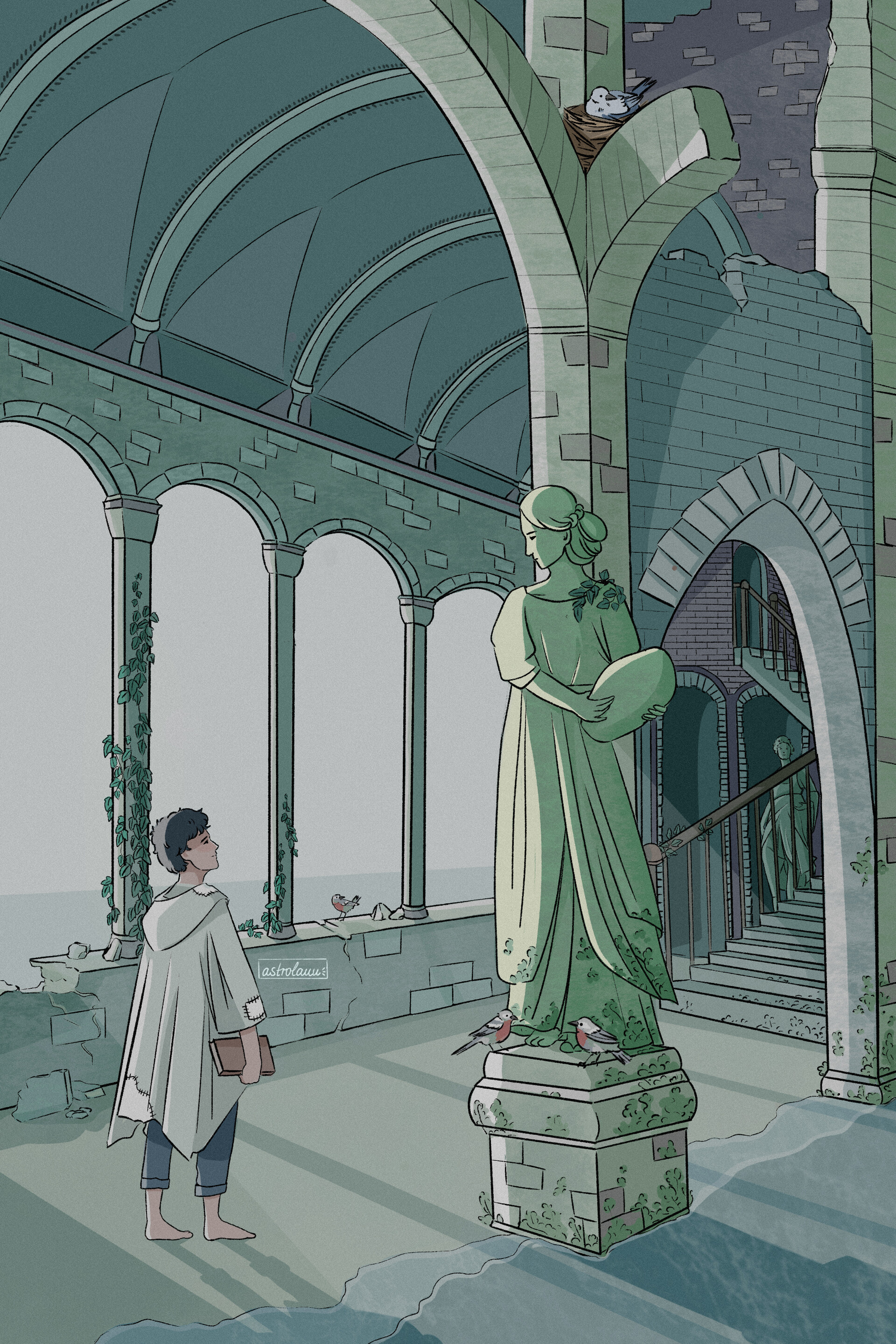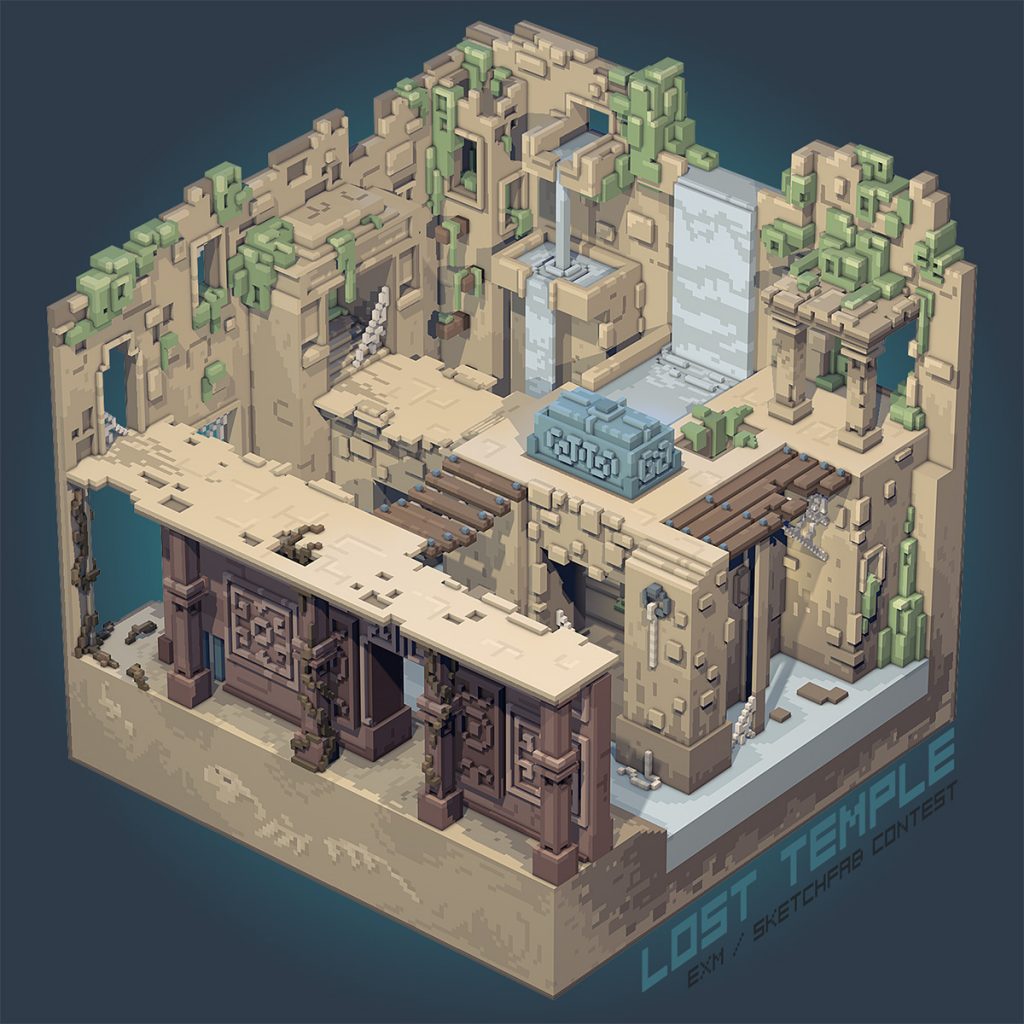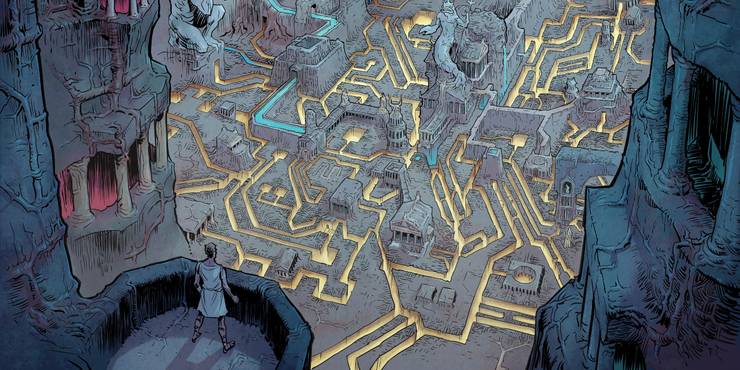Orbs
As I wrote about in my Previous Post, it is believed there are three prime substances in Hypogeum: Stuff, Life, and Magic. I wrote there mostly about the movements and behaviors of Life, but here I will talk mostly about the behavior of magic. Like Life, Magic can be either found in a pure, gaseous state, or dissolved into another material. As well, Magic has a material memory like Life. This memory takes the form of Spells.
Orbs are a shape of stuff which is good at absorbing Magic. The type of stuff the orb is made of might have some affect on this ability. Certainly, the type of stuff it is made of affects the spells it is predisposed to. Orbs made of a once living material, like bone or wood, cast spells related to the magic present in the being it was procured from. Orbs might have this sort of intrinsic property if made from another magic containing material.
Other orbs are made from materials which don't normally contain magic, or which have had their magic fully drained or purged of its memory. Crystal is most favored for this (see below). Into such a blank orb is placed a seed spell, which can thenceforth shape the magic absorbed into it. This process of shaping can affect the appearance and form of the orb naturally, or very learned people can try to modify an orb to be more suited to a spell or class of spells. This makes the variety of orbs we find in the world.
Orbs, like swords, might not be made of specific type of stuff, but instead be made out of Orb. These can be found commonly, and might be blank, but more often have a spell in them.
Crystals
Crystals are both a shape and a type of stuff. They are ordered and regular. A cubic crystal forms cubes naturally. A pointy crystal forms points, given more stuff to work with. Despite this natural tendency toward one shape, most crystals can be formed into orbs manually, with some skill and persistence.
Crystals are valuable for one property of theirs: It takes considerable effort to get magic in and out of them. This may not seem like a good thing, but it means crystals are often naturally magical blanks, and if you can get pure magic in them, they store it without turning it into spells. It isn't that difficult to do, its just harder than natural processes allow most of the time. If you find a magic crystal out in the wild, that means either someone put it there, or something really magic happened there once upon a time.
Crystals are used in jewelry and art objects for three reasons: firstly, and obviously, its pretty; secondly, it makes good magic item batteries, making the objects useful; and thirdly, for safety. Magic infused crystals glow, and crystals inset into magical objects become infused. If you are handed a fancy thing, you can tell its not magic (thereby, not cursed) if it has crystals that aren't glowy. Still makes it hard to tell if you are being cursed by a magic item, but at least you know that some random jewelry isn't going to curse you.
You could, of course, just use crystals as light sources. Many people do, especially in areas with lots of them. Adventurers who are sorcerers or relic-seekers use them very often.
Runes
Runes are another shape of Stuff. They are very bad at storing magic in general. However, each rune is alright at storing one specific spell. Magic with any other spell memorized, or no spell memorized, simply slides off it. Magic with a memory is very rare in natural, ambient conditions, so just carving a rune and leaving it out won't attract the specific spell it is attuned to. The spell must be transferred to the rune.
Most runes are carved into other materials. These runes are durable, but can't hold almost any magic. Some runes are written on other materials with ink. These are both less durable and have less capacity than carved runes. Some inks are very good at storing magic, and so have higher capacity than carved runes.
The best practice, many say, is to scribe with this magic-storing ink on very magical paper or vellum, making a scroll. Scrolls can basically hold a whole spell, both energetically and mnemonically, but casting the spell drains the stuff of magic, which has the same effect as removing all the water in a sand castle.
Some scrolls exist in the Hypogeum, but they are very rare, and runes aren't used very much in the current era. The most research about them is done in darkling settlements. Scrolls in general are very basic looking, showing a single large rune. Runes also form naturally, as described above, on some spell containing items, like orbs.
Books
Just like scrolls, books aren't common in the Hypogeum. Most Folk aren't much for literacy, but if they are, they paint things on hard tablets or walls, or carve it in clay, or do other things besides. Its simply too damp to make books feasible. However, they do exist.
Books are sometimes brought in by Humans and other otherworlders. These are written in glyphs that only humans can read, and are generally worthless in the hands of others, unless they are collectors. However, some books written by humans are dangerous things known as "poetry", a kind of tool used by humans to enhance their already silver tongues. Poetry read by humans can be intoxicating, and can rival magic in terms of its ability to affect Folk. Some writings in ruins or dungeons have been identified as poetry by human explorers, lending further credence to the theory that humans were the original inhabitants of the Hypogeum. These ruin poems are known for their ability to make any meaning to them impenetrable to all but the most clever and free-thinking Folk (PC Folk).
Books can also be found, rarely, as treasures. Like all treasures, these seem apparently native to the Hypogeum. Often they have a large rune on the front. If the book is a relic, the rune is an indicator of the spell contained within. Some wise Darklings have discovered that treasure books have internally consistent language, unique to each book so far as they have found. This has become widely known, though not widely used except by weirdos.
A note on Treasures and Relics: Treasures are valuable things found in the Hypogeum. Among almost all people, it is generally accepted that one treasure is worth mostly the same as another, barring extraordinary circumstances, and not accounting for taste or individual usefulness. If you bring a fancy hat back from your adventures, its valued the same as a magic item or filigreed staff or, indeed, a book. Mostly they are used for sentimental and aesthetic reasons anyways. Relics are items, sometimes treasures, that can be used by Relicseekers and contain an intrinsic spell. The nature of magic in an relic is such that only Relicseekers of a certain predilection can use them. An Orb couldn't be used by a Bookseeker, after all!
 |
| Porbal |
Portals
[Post Pending]
Wizards (Damn Them)
The magic present in people is diffuse and faint, normally unusable, just the background level of magic in any place. Wizards are people who cultivate magic in themselves. Most of the time, wizards are sorcerers, also called arcanophages. They drink or eat things with lots of magic in them so that they may concentrate that magic. Most often they drink magic infused water, sometimes (incorrectly) called distilled magic. Not everyone does, though. Relicseekers attune their minds to a certain sort of relic, allowing them to use or siphon the magic inside objects.
The heavy use of magic has effects on the body and mind of its users. Both sorcerers and relicseekers gradually are changed and mutated by the presence of magic, in such a way that allows more magic to enter their bodies, and be more easily manipulated. Orb-like organs, maze-like brains, and other mutations allow true wizards to contain many spells discretely, absorb magic naturally, and modify existing spells.
However, learning new spells is difficult. Either new relics or runes must be obtained, or maddening insights must be undertaken. The easier way is to take apprentices. Each person has some faint magic already inside them, and that magic has a memory, and that memory is a spell. Cultivating that magic to the point that a person's natural spell may be cast, and thus learned by the teacher, leaves the apprentice an almost capable wizard.
Of course, for as many true wizards are out there, there are a thousand middling sorcerers and superstitious relic-seekers, skirting along on not even a basic understanding of the nature and behavior of magic. Such is life.









































